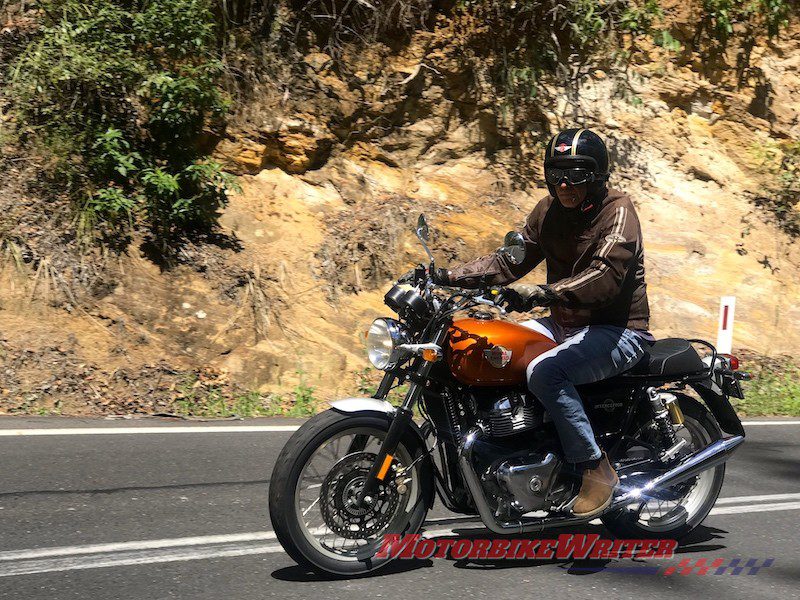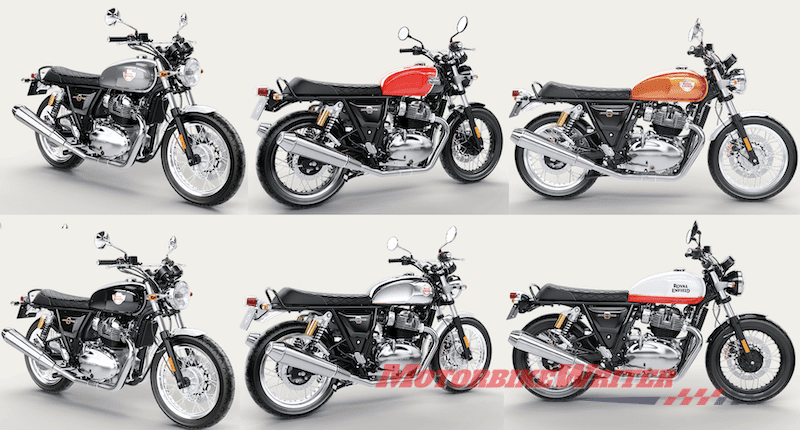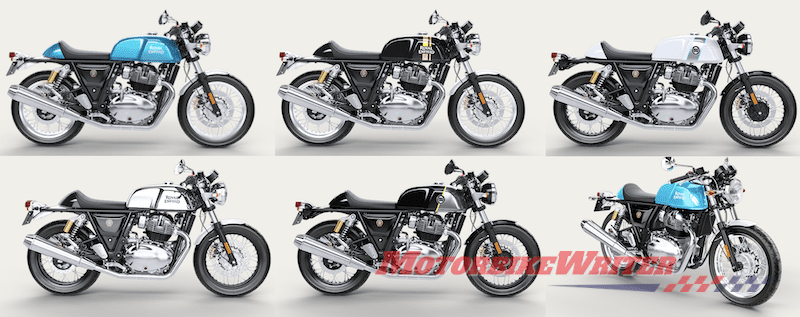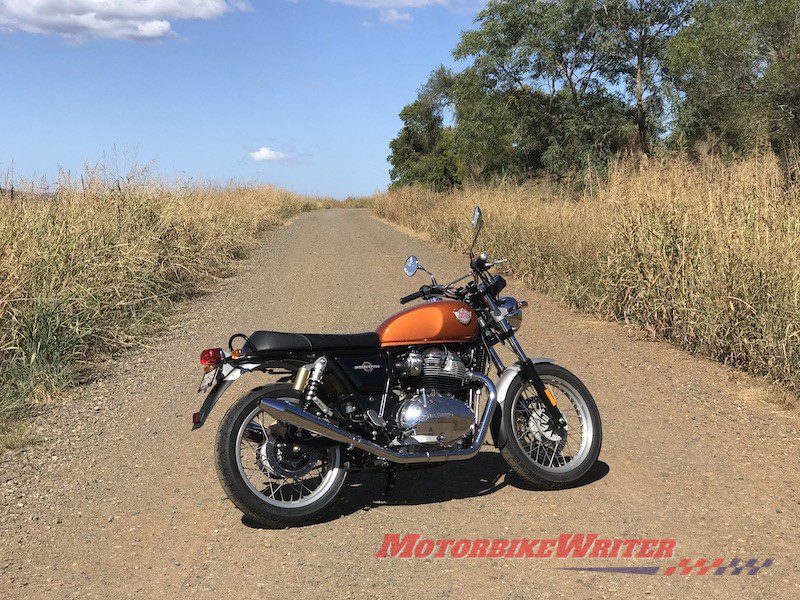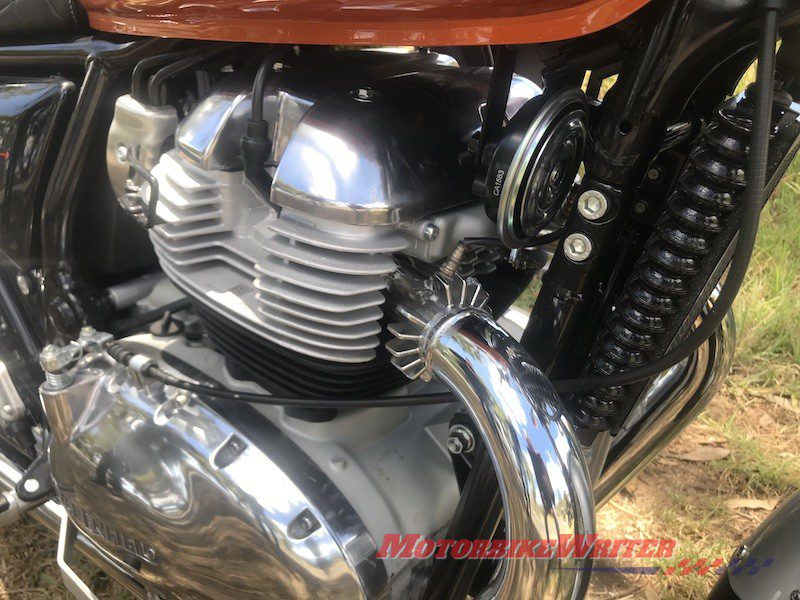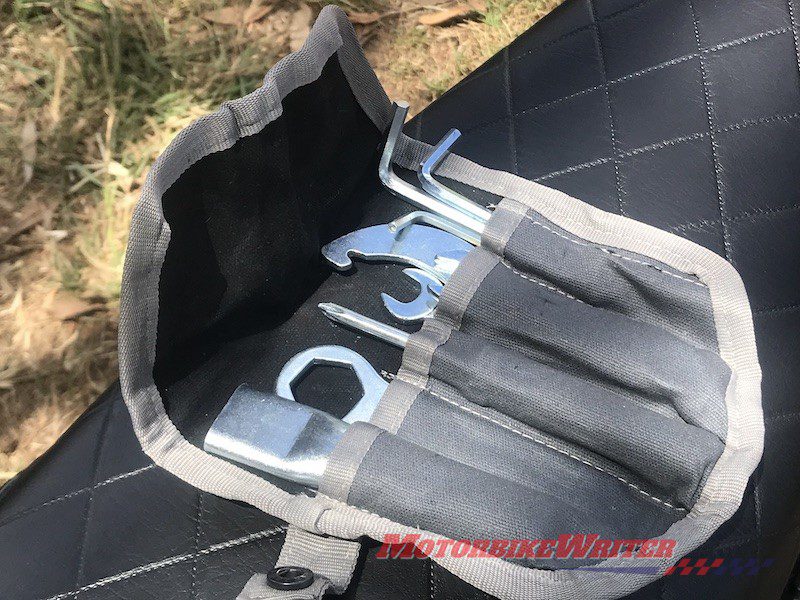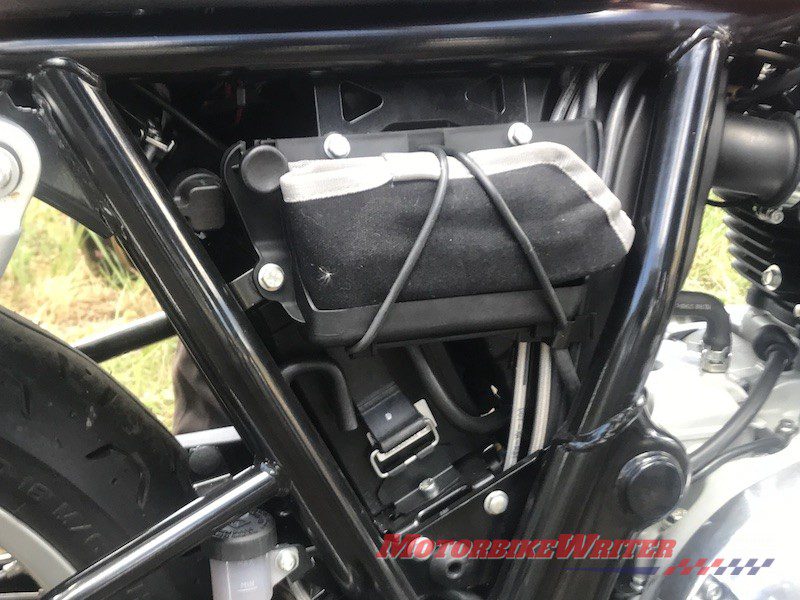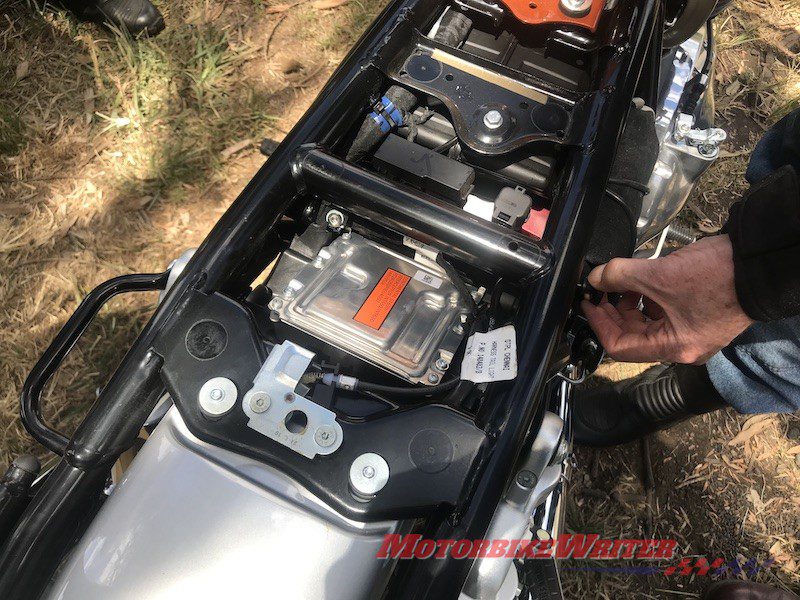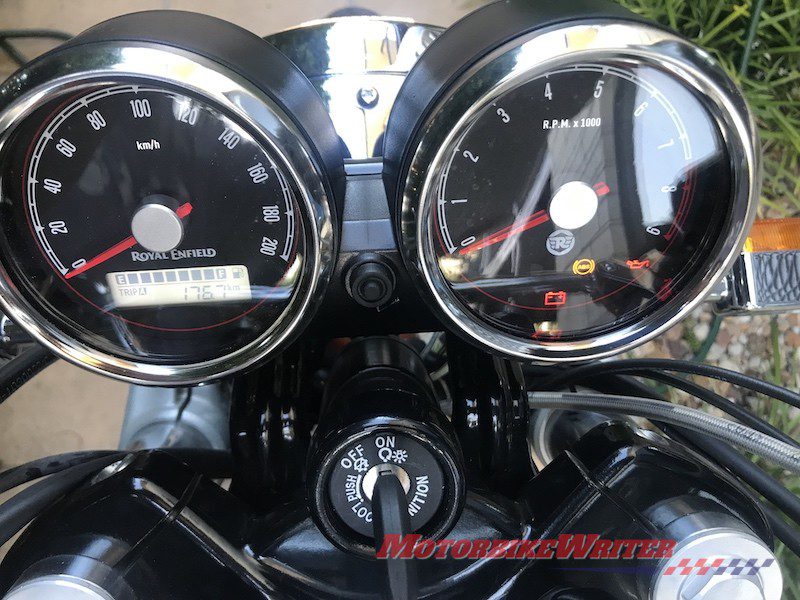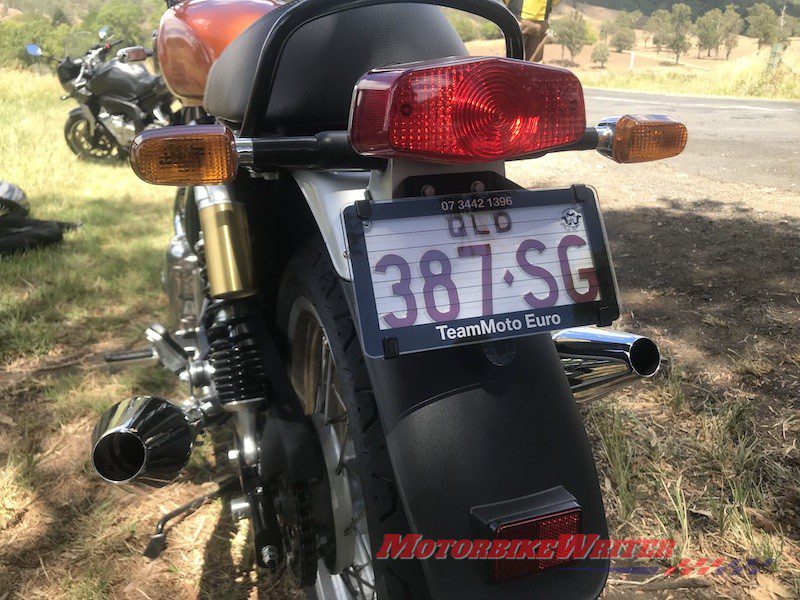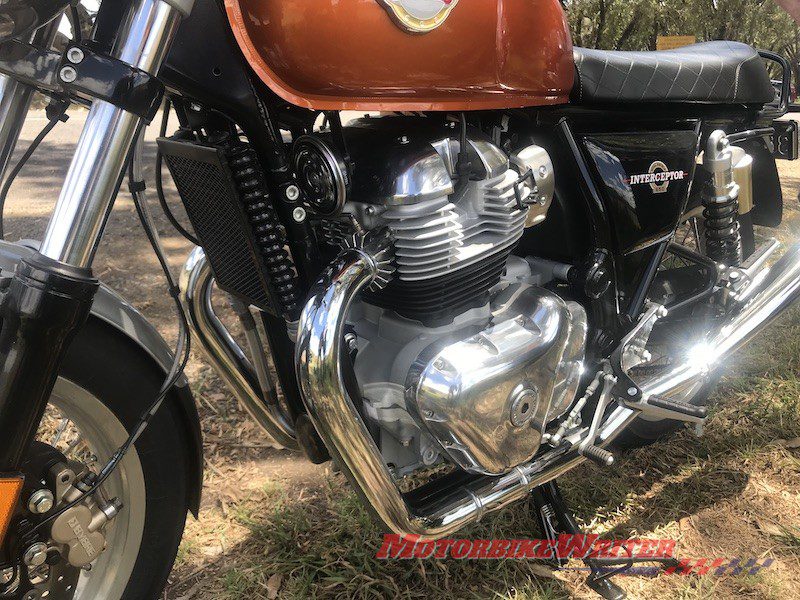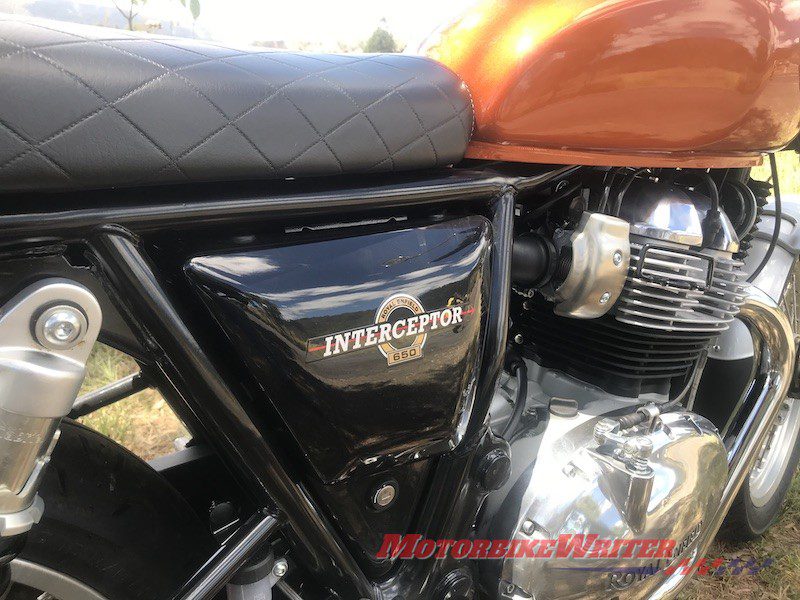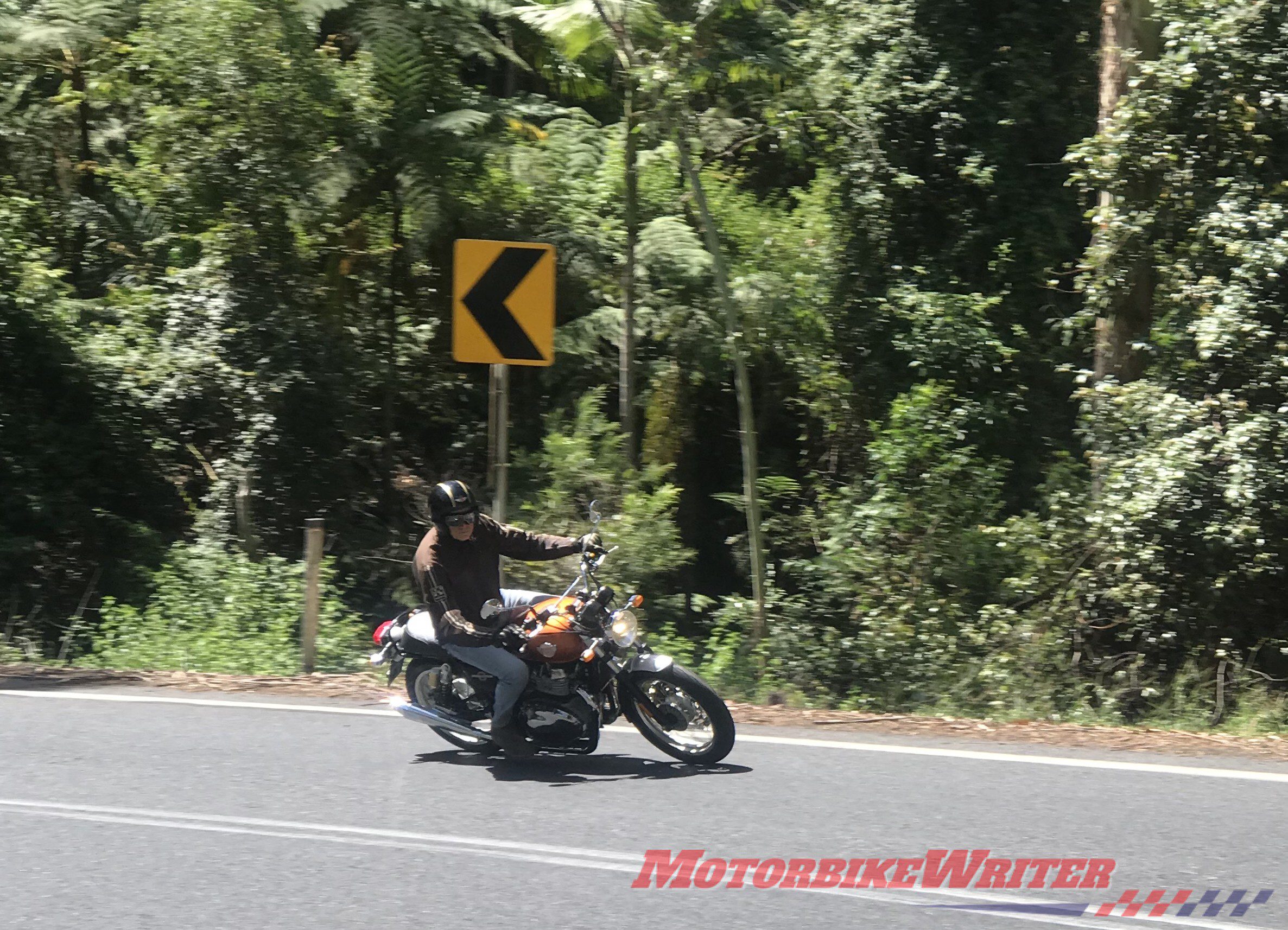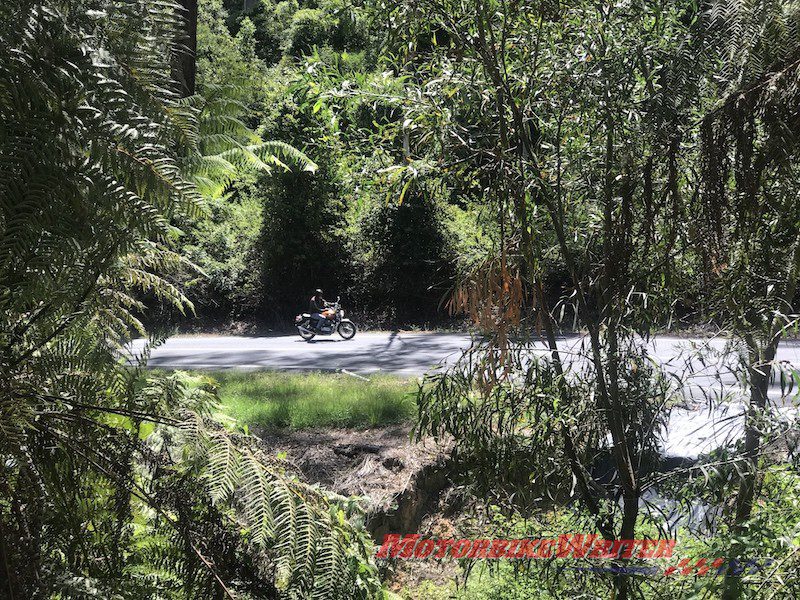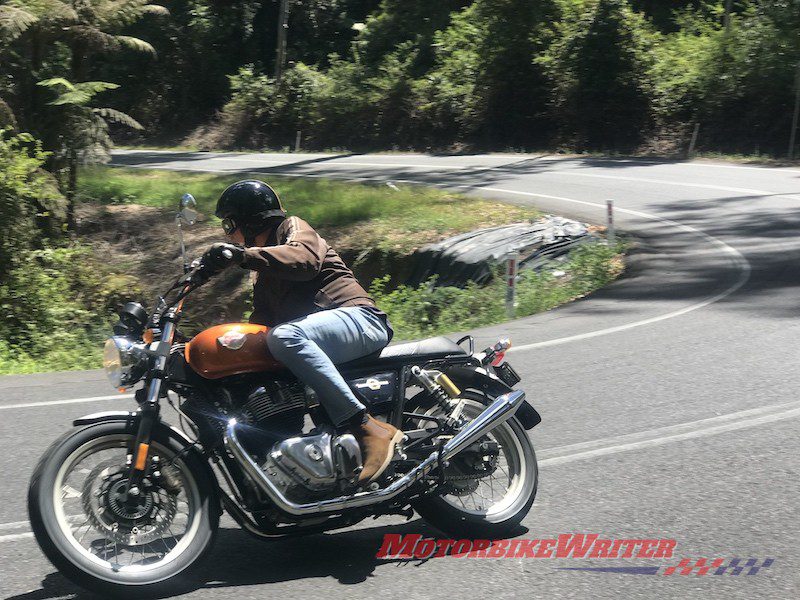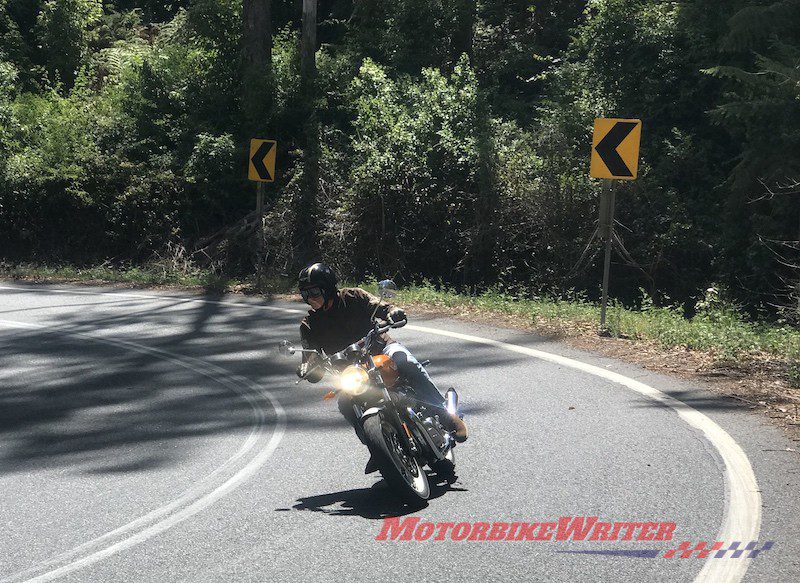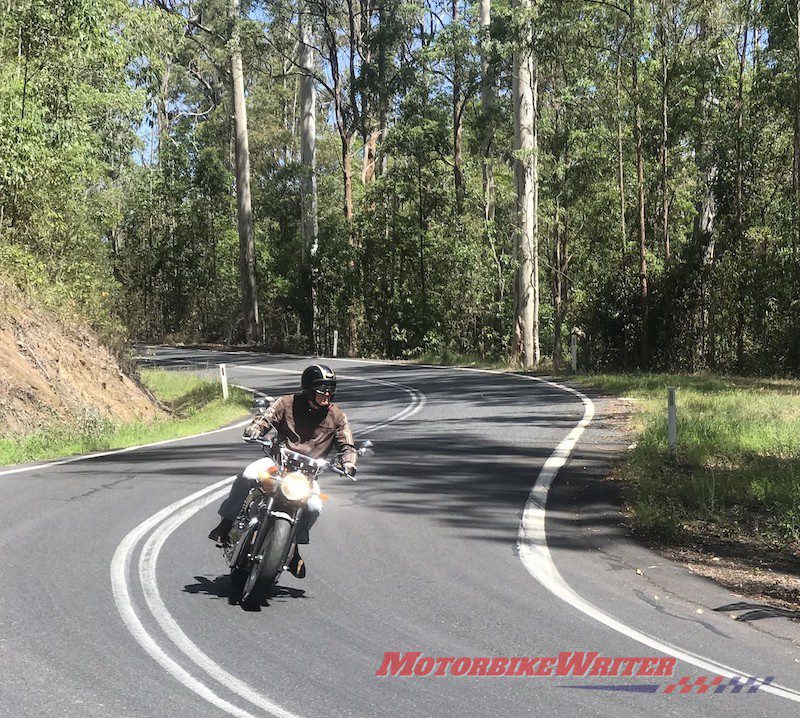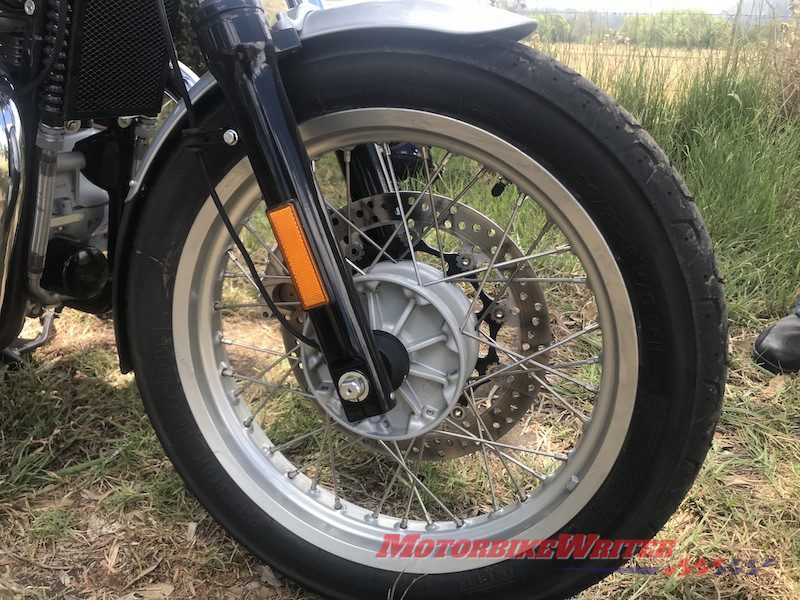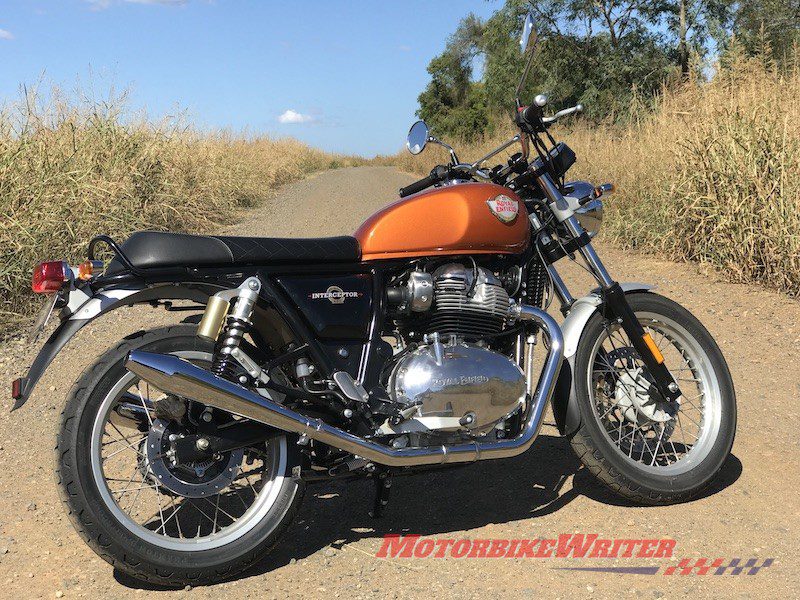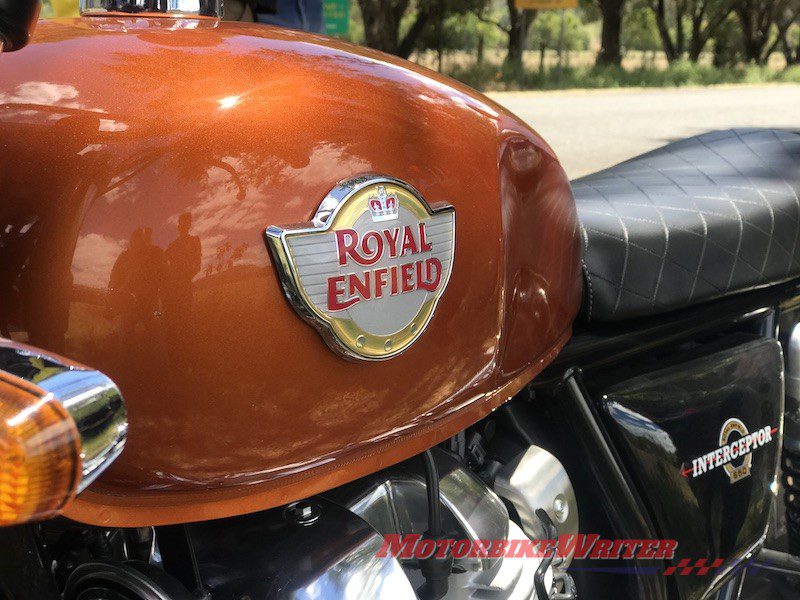The first twin-cylinder Royal Enfields in six decades are now arriving in showrooms around the world and riders are lining up at dealerships for test rides.
Australian importer Urban Moto Imports organised a demo bike for me through TeamMoto Euro in Slacks Creek, but because of the demand, I only had a couple of days with the bike.
Dealer principal Richard Nicholson asked if I could pick it up at close of business on Saturday and have it back first thing Monday morning as demo rides were booked solid.
Such is the hype and excitement in these new parallel twin models!
I’m happy to report that after thrashing the bike through traffic, down highways and over the Border Ranges, the Interceptor 650 lives up to most of the hype. Watch my brief video review below.
Royal twins
The learner-legal Royal twins are the Interceptor and the Continental GT. I will ride the latter next weekend, again between solidly booked demo rides.
The only differences are the straight bars, bench seat, tank badges and centre stand on the Interceptor while the GT has clip-ons, a humped seat, painted logos and no centre stand.
Here are the ride-away prices, depending on tank colours.
Interceptor 650
- $9790 (solid colours — orange, black and silver);
- $9990 two-tone (orange, white and gold pinstripe; red, black and white pinstripe);
- $10,290 chrome tank.
Continental GT
- $9990 (pale blue, black with gold GT stripes);
- $10,190 (two-tone black/silver with yellow pinstripe, white with silver and blue stripe);
- $10,490 (chrome).
Retro styling
Richard says the previous problems with Royal Enfield chrome tanks have been resolved.
A close inspection at the demo models substantiates a vast improvement in paint and chrome finish.
In fact, the overall quality is a substantial improvement. I pulled the locked seat off the bike and was pleased to find the paint extends right down the tank where you can’t see it and the welds are neat.
Even the initials of the bike builder responsible are hand painted on the end of the tank under the seat.
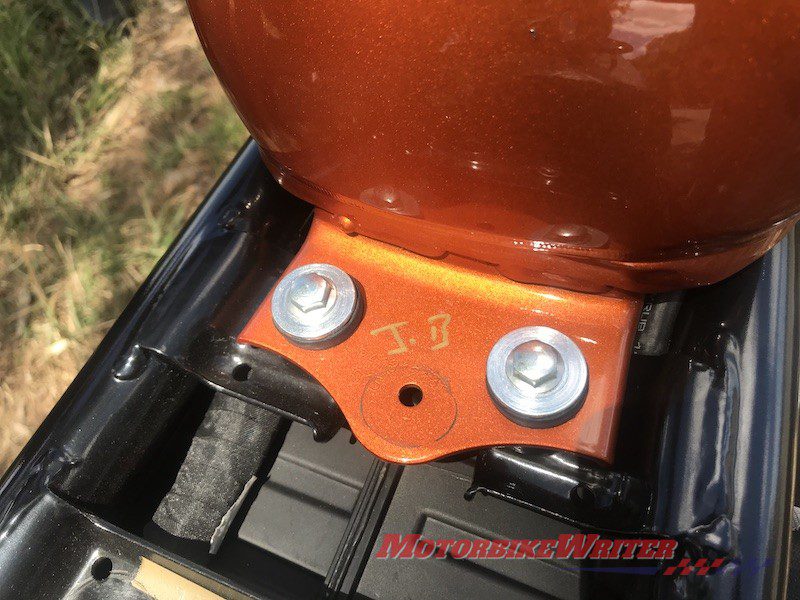
That’s pride of workmanship, with good reason.
Wiring and cabling is tidy, plastics are smooth, the vinyl seat is good quality and even the footpegs are nice rubber and alloy units.
The only build fault I could find was a slightly gummy weld joint where the headers leave the cylinder.
Those who love the retro look will appreciate that Royal Enfield didn’t go to town on the chrome which the original ‘50s/‘60s cafe racers didn’t have.
Instead of acres of chrome, the engine casings and wheel rims are brushed alloy (black rims on some models) which looks understatedly stunning. (Now there’s an oxymoron for you!)
For a $10,000 bike there are quite a few niceties and extras such as twin instrument pods with a tachometer, comprehensive toolkit and lockable fuel cap.
It also sits on retro-style Pirelli Phantom tyres originally made for the Ducati GT1000 and used on the new Triumph Bonneville.
And how many $10,000 bikes come with a centre stand as standard these days, let alone a toolkit? In fact, how many bikes twice the price have a centre stand and toolkit!
The latter is in a side panel which is locked with the ignition key. It also has a latch inside that unlocks the seat.
Speaking of which, it’s soft and quite comfortable, but after two hours in the neutral riding position you sink down into the seat and you can feel the supports underneath.
The seat is 804mm high, but it’s very narrow, so at 183mm tall I could easily get my flat feet on the ground with knees bent.
Pillions will enjoy the thick padding and the substantial grab handle at the back.
Royal Enfield has kept the price down by making this a lo-fi bike. No fancy traction controls and electronic wizardry, although it does have ABS, of course.
The instruments are basic with just two analogue pods (speedo and tacho) and a small LCD screen with readouts for odometer, trip A and B and a voltmeter when running. No clock, ambient temperature, weather forecast or stock market readouts!
And you have to reach over and touch a mode button between the two dials.
The indicators and taillight are also basic and the mirrors are cheap units that come loose over rough roads and blur at highway speed.
The rear tail features a cheap and ugly rubber fender extender that can easily be unscrewed and discarded.
Heartbeat
Many Royal Enfield enthusiasts are attracted by the slow and methodical pulse of the single-cylinder engine.
These parallel twins have a 270-degree crank like the new liquid-cooled Triumph Bonnevilles, so they are a totally different heartbeat.
And unlike the the 500 singles, you don’t need to schedule a slot in your diary to reach 100km/h. It will reach 100km/h in about six seconds.
Some say it will top 170km/h, but I managed 140 — under controlled conditions, of course!
It will certainly cruise at legal highway speeds in a relaxed manner with very little vibration or hand/feet tingle.
Riders in hot climates will also appreciate the fact that they do not run near as hot as the new scorching Bonnes. The cylinder heads still get quite hot, as you would expect, but there are coated metal protectors so you don’t burn your knees.
The 648cc twin is oil and air cooled with a modest 47 horsepower or 35kW at 7100rpm and 52Nm of torque at 4000rpm.
It doesn’t sound like much, but the midrange is smooth and meaty.
The engine is mated to a super-slick, six-speed gearbox and clutch with a moderate pull so it is easy to use in traffic.
You will need to feed the bike some revs in the first couple of gears for rapid acceleration from the front of the queue at the traffic lights.
If you continue to rev the bike to the limiter and dance on the gearshift you will get maximum results, but you may also hit a few false neutrals.
With such moderate horsepower there is not a lot of point in spinning it out to the red line every shift.
I found it yields satisfactory results if you short-shift through the gears and ride around town in fourth or fifth at 4000rpm.
Out on the highway, it cruises without stress at 4000 revs in sixth. Since the engine pulls lustily from 3000 revs, you can roll on the throttle without having to drop a cog.
I pushed it moderately hard through traffic and winding hills, yet the bike yielded impressive economy figures over about 500km of 3.6L/100km.
That means range of almost 350km from the 12.5-litre tank.
The Interceptor 650 I rode was fitted with aftermarket slip-on Emgo mufflers for an extra $300.
Richard regrets fitting them to the Interceptor, saying they don’t suit its more sedate image.
He says they should have gone on the more racey-looking Continental GT cafe racer.

They also sound a little nasty and anti-social when revved hard, although they do give the throttle improved response, he says.
There are S&S Cycle mufflers coming in about six months that promise a better sound.
Ride and handling
The twin cradle frame and twin-shock suspension set-up is as traditional as it gets, but it works.
It’s not the lightest 650 out there at 202kg dry, but the frame and suspension combine to provide a light-steering, agile bike.
I found the American-made Grabriel shocks a little on the soft side for my 80kg frame, even after pumping up the rear preload to the fourth of five settings.
You can adjust them by hand if you’re strong and put the bike on its centre stand, although there is a C spanner included in the toolkit.
It still managed to bottom out over some big bumps, bounced around at the rear and wobbled a little over mid-corner irregularities.
However, that was when it was pushed hard. If you trot along at legal pace, it’s all quite controllable with those wide, braced handlebars.
I believe Ohlins is working on suspension upgrades, but that could be overkill on a $10k bike.
The Interceptor turns in quite quickly and holds its line well on its narrow, 18-inch front and rear Pirelli Phantom tyres.
They have good corner and braking grip, although the front was found lacking on emergency stops with the bike’s single disc and hefty weight.
The brakes are Bybre which is a discount Brembo offshoot and they have braided steel lines for good feel. Still, a second front disc would be welcome.
Despite the heft, the bike is easy to lift onto the centre stand with a convenient handle beside the seat like on old bikes.
Conclusion
There has been a lot of pent-up demand for this bike since it was announced almost two years ago.
Thankfully the excitement and hype is justified.
Royal Enfield has done a good job of bringing a top-value product to the market that will equally excite old stagers, neo-classic hipsters, learners and novices, mature riders and those who are looking for a good donor bike for a custom.
This bike would be very easy to modify into a bobber, scrambler, street tracker or cafe racer.
No doubt Royal Enfield will also produce more model variants and we’d loved to see this engine in the Himalayan adventure bike.
Make a scrambler and take my money!
Royal Enfield Interceptor 650 tech specs
- Price: $9790 (solid colours), $9990 (two-tone) $10,290 (chrome tank)
- Warranty: three-year, unlimited kms and roadside assist
- Service intervals: 1000/10,000km
- Engine: 4 stroke, single overhead cam, air-oil cooled, 8-valve, 648cc parallel twin
- Bore x stroke: 78 x 67.8mm
- Compression: 9.5:1
- Power: 35kW @ 7100rpm
- Torque: 52Nm @ 4000rpm
- Transmission: 6-speed, wet clutch
- Fuel tank: 12.5 litres
- Economy: 3.6L/1000km (tested)
- Chassis: twin cradle tubular steel
- Suspension: conventional forks, twin Gabriel shocks
- Wheels: 18-inch, 36-spoke alloys
- Tures: Pirelli Phantom Sportcomp, 100/90-18 front, 130/70-18 rear
- Brakes: Bybre 320mm single front disc, 240mm rear disc, ABS
- Length: 2122mm
- Width: 789mm
- Seat: 809mm
- Height: 1165mm
- Clearance: 174mm
- Dry weight: 202kg


